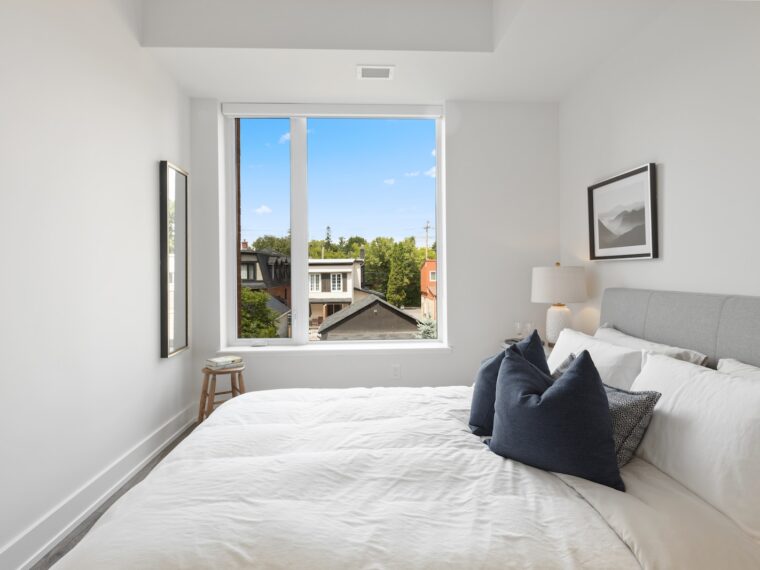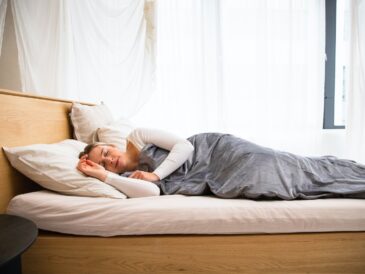Box springs are wooden frames filled with coils that support and elevate a mattress, typically used together with metal bed frames to support innerspring mattresses.
Add an adjustable bed base to make getting in and out of bed easier, although newer mattresses do not necessarily need them.
Modern Mattresses Don’t Need Box Springs
Box springs are a type of mattress base composed of a box-like frame covered in fabric with metal coils or springs inside – these act as supports to a mattress, creating more bounce and providing solid support to prevent sagging and prevent sagging, but are less necessary with modern foam and latex mattresses.
If you’re trying to free up space in your bedroom, opting for a low-profile foundation or bed base might be a better way. These low-profile options typically measure half the height and cost less. Plus they work with most types of bed frames! Many mattress brands such as Casper, GhostBed and Tuft & Needle produce foundation products designed specifically to help customers switch away from conventional box springs.
As it’s important to keep your mattress clean, placing it directly on the floor may result in sagging and be difficult to keep looking its best. Furthermore, this could void your warranty. However, memory foam and hybrid models often need additional support and a firm foundation; in such instances a traditional box spring may provide this necessary structure.
Platform Beds Are More Popular
Platform beds are frames that do not require a box spring for support, typically featuring either a slatted or metal grid platform on which mattresses rest. Their contemporary, sleek, modern style fits well into numerous interior design styles while offering many potential advantages over their more conventional counterparts, including reduced costs, more storage underneath and possibly helping circulation in hot environments.
Box springs use steel coils to support mattresses. While box springs may work for lightweight innerspring mattresses and help absorb shocks and body weight, hybrid or memory foam mattresses with higher densities could damage these coils over time.
Platform beds have become an increasingly popular option due to their ability to offer more space underneath the mattress for easier cleaning, breathability and versatility with all kinds of mattresses. Some platform beds even come equipped with built-in drawers for clothing storage or other necessities – perfect for people living in small spaces who want less clutter in their bedrooms! Furthermore, platform beds are more cost-effective as setup typically doesn’t require other accessories for mattress setup.
Adjustable Bases Are Better
Box springs provide support for mattresses by elevating them off of the ground, increasing airflow and preventing it from sinking over time. This also prevents bottom of mattress sag.
Modern mattresses no longer need the additional support provided by a box spring, and using one could actually cause it to sag more than before. Companies such as Casper and Leesa advise against this practice when offering bed-in-a-box products like theirs.
Reason? Traditional box springs contain coils which can cause the mattress to wear away over time, leading to sag and lower back pain. An adjustable base provides a better alternative.
Adjustable bases offer great value and can raise the height of a mattress up to 9 inches, plus are more durable than box springs, with warranties against damage provided as standard. Some adjustable bases are more stylish than others, yet even basic models provide tremendous value for your money.
An adjustable base offers many advantages, one of which being its ease of assembly without needing tools like wrenches or screwdrivers to put together. Professional installation might still be required depending on which platform or slatted base, adjustable mattress, or Bunkie board you select – ultimately the decision is yours!
Bunkie Boards Are Better
Bunkie boards (sometimes known as bunky boards) are low-profile foundations designed to serve as an alternative to box springs, typically constructed out of plywood or particle board and stained or finished to match your bed frame. Bunkie boards provide a firm surface for your mattress while keeping its frame sturdy and stable while helping prevent sagging with older mattresses.
Bunkie boards were initially invented as bases for bunk bed mattresses. Traditional innerspring mattresses require box springs to control pressure and distribute weight evenly, but box springs were too thick for bunk bed frames; when sleepers would sit up in bed they’d hit their heads on the frame above. Bunkie boards provided an effective solution and remain popular today.
Bunkie boards also work well with modern foam and hybrid mattresses because they don’t droop like traditional box springs do, providing more stable surfaces for them to remain flat. Their lower height makes bunkie boards suitable for people seeking minimalist looks in small bedrooms as well as those looking for ways to save on shipping costs by forgoing this option altogether.




